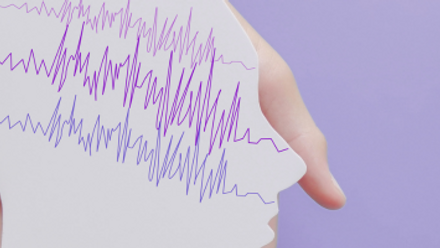Updated UKCCNA Position Statement
The UKCCNA acknowledges the enormous pressure critical care nurses (and other staff) are experiencing at present. We understand the significant negative impact this is having on nurses’ mental health and well-being.
Nurse-patient ratios
We set out our position on bedside nurse : patient ratios during COVID-19 Wave 2 in our November 2020 statement (1) based on research evidence and experience from Wave 1. The UKCCNA firmly believe patient safety and staff well-being will be best secured if ratios are maintained at a minimum of one trained critical care nurse (TCCN)* and one registered healthcare professional** for two level 3 patients (compared with the normal 1:1 ratio(2,3), and one TCCN with one registered healthcare professional for every four level 2 patients (compared to the normal 1:2 ratio(2,3) as set out in National pandemic workforce guidance documents, such as that published by NHSE.4 Other support staff*** should also be available to assist with delivering patient care. Pandemic ratios should be achieved through the redeployment of staff from outside critical care who should have received critical care surge training. Staff are encouraged to make use of the online training resources, such as those produced by the London Transformation and Learning Collaborative - Critical Care (LTLC) - e-Learning for Healthcare (e-lfh.org.uk).
The UKCCNA position from November 2020 on staffing (1) remains unchanged, however bedside nurse : patient ratios are already deteriorating beyond those set out by national pandemic guidance documents (4) Further dilution of bedside nurse : patient ratios should only happen in exceptional circumstances where there is a need to expand capacity despite escalation to regional and national critical care networks and when all local and regional mutual aid options, including inter-regional assistance, have been exhausted. Ratios beyond 1 TCCN : 2 patients should only be used to facilitate emergency admissions. This should not include admissions for non-emergency surgery requiring critical care (5) Ratios must be returned to normal as soon as practicable as these staffing levels are unsustainable for nurses’ well-being and for patient safety. After the COVID19 pandemic we must see a return to GPICS2 staffing model (1) Data on adverse patient and staff outcomes should be collected.
The UKCCNA requests that the four Nations provide further guidance on how to manage the increased workforce requirements associated with additional expansion of critical care capacity.
Redeployment of staff
Further redeployment of staff, either within their own NHS organisation or between organisations is now extremely challenging and no longer viable in some places. This is due to multiple factors including staff sickness, pressures related to covering ward beds and the need for inter- hospital transfers. This problem is compounded by the bureaucratic challenges faced by some nurses who do not currently work for the NHS (for example academics and retired staff) which prevent or delay them from being able to work. Unnecessary restrictions and administrative hurdles must be removed, and a common-sense approach taken to facilitate the timely availability of staff.
Nurse wellbeing
The UKCCNA acknowledges the significant negative impact on nurses’ mental health and well- being. We strongly encourage nurses to look after themselves and to take full advantage of available support resources. Asking for help is not a sign of weakness. Links to wellbeing resources and 1:1 support are available via our member organisation websites: British Association of Critical Care Nurses; Intensive Care Society; Royal College of Nursing; CC3N . We also recommend that research exploring how best to support nurses’ well-being is prioritised.
Definition of terms
*Trained critical care nurses (TCCN): Whilst specialist training based on Steps competencies6 is usually required to become a TCCN, in this exceptional situation TCCNs are defined as those who have completed their step 1 competencies (or have been deemed competent to care for a critically ill patient) and who normally work in critical care plus TCCNs who have left the specialty within the last 12 months.
**Registered health care professionals (CAT A and B): A registered nurse or other relevant health care professional (ideally with IV competence and some preparatory critical care training) working in the capacity of a bedside nurse. This will include nurses with critical care experience longer than 12 months ago.
***Other support staff: Unregistered nursing and non-nursing support workers, including healthcare students, dentists and doctors working in bedside care support roles.
The joint statement on developing immediate critical care nursing capacity remains current.(7)
~End~
Notes to readers:
The UK Critical Care Nursing Alliance (UKCCNA), established in 2013, provides a structured mechanism to facilitate collaborative working with all nationally recognised critical care nursing organisations across the United Kingdom. The aim of the UKCCNA is to be proactive and visionary about service requirements, providing quality assurance, enhancing the service, quality of care, patient experience and outcomes in critical care. Further details of UKCCNA member representatives are on the website:
The member organisations of the UKCCNA are:
- Royal College of Nursing (Critical Care and Flight Nursing Forum)
- British Association of Critical Care Nurses (BACCN)
- Intensive Care Society (ICS)
- Critical Care National Network Nurse Lead Forum (CC3N)
- National Outreach Forum (NORF)
- Paediatric Critical Care Society (PCCS)
References
- UKCCNA position statement: https://www.ficm.ac.uk/uk-critical-care-nursing-alliance- ukccna/ukccna-workforce-news-and-statements
- GPICS 2nd edition
- https://www.england.nhs.uk/commissioning/spec-services/npc-crg/group-d/d05/
- https://www.england.nhs.uk/coronavirus/publication/advice-on-acute-sector-workforce- models-during-covid-19/
- https://fssa.org.uk/covid-19_documents.aspx
- https://www.cc3n.org.uk/uploads/9/8/4/2/98425184/01_new_step_1_final1_.pdf
- https://www.england.nhs.uk/coronavirus/publication/joint-statement-on-developing- immediate-critical-care-nursing-capacity/



